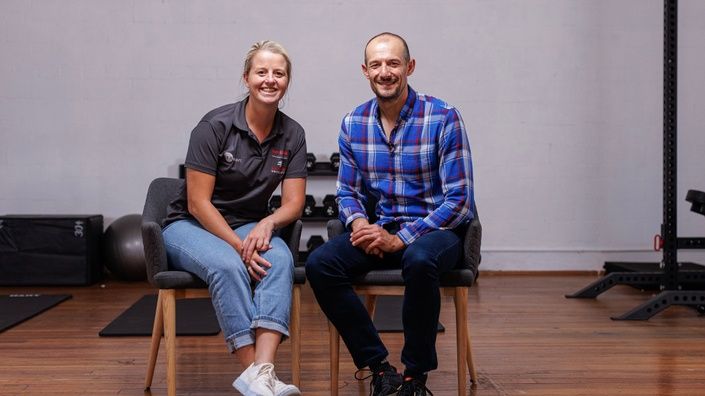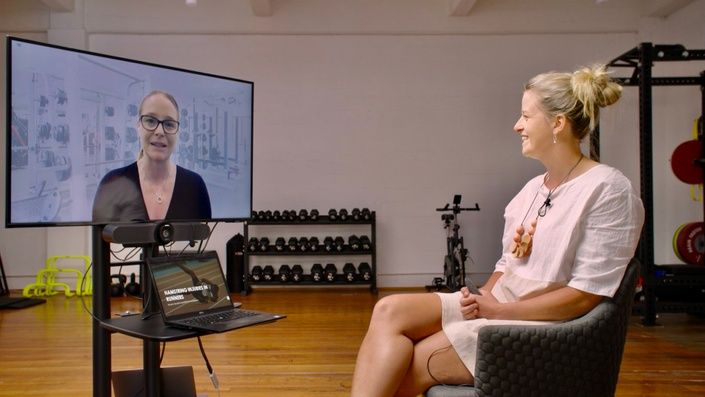Free Preview
Press the play button to watch this FREE PREVIEW of some exercise therapy options to manage Hip Osteoarthritis
Learning Objectives:
- What is Hip OA?
- Common causes of Hip OA
- Hip Osteoarthritis (OA) and its affect on society
- Hip pain and OA in females
- Taking a sound subjective assessment
- The objective assessment
- What are some possible RED FLAGS?
- The role of imaging
- Treatment options for Hip OA
- When to consider Total Hip Replacement

Clinical Assessment
The subjective and objective assessment is critical in determining if the person presenting with Hip pain actually has features of Hip OA? Or do they have lumbar spine referral? Or do they have Red Flags driving their Hip pain?

Treatment Options
Jo and Adam walk you through the current treatment options for Hip OA; including pharmacological, non-pharmacological and surgical. Some have great treatment effects, whilst others not-so-much!

Exercise Therapy
Exercise Therapy for Hip OA is one of the best forms of treatment for Hip OA. But unfortunately, very little Hip OA patients receive it! Learn how to introduce exercise into your management plans safely and effectively

Dr Joanne Kemp
Joanne Kemp is a Research Fellow at Latrobe Sport and Exercise Medicine Research Centre, and is a titled APA Sports Physiotherapist of 20+ years’ experience. She is also an adjunct Research Fellow at the Australian Collaboration for Research into Injury in Sport and its Prevention, Faculty of Health, Federation University Australia. She completed her PhD at University of Queensland in early 2014. Her thesis was titled ‘Factors associated with outcomes following hip arthroscopy’.
Joanne has presented extensively on the management of hip pain and hip pathology in Australia and internationally. Her research is focused on hip pathology including early onset hip OA in younger adults, and its impact on activity, function and quality of life. She is also focussed on the long-term consequence of sports injury on joint health. She has a particular focus on surgical and non-surgical interventions that can slow the progression and reduce the symptoms associated with hip pathology and hip OA.
Adam Culvenor
Adam is a National Health and Medical Research Council (NHMRC) Early Career Research Fellow, Head of the Anterior Cruciate Ligament (ACL) Knee Injury Group and Senior Research Fellow within the La Trobe Sport and Exercise Medicine Research Centre. His research focuses on the outcomes of ACL injuries, in particular the prevention and management of early knee osteoarthritis in young adults following ACL injury and reconstruction. Adam has a clinical background in physiotherapy and has worked in teaching and research at universities in Australia, Norway and Austria.
His research has been awarded American Journal of Sports Medicine most outstanding paper 2016, Australian Physiotherapy Association Best New Investigator 2013 & 2017 in musculoskeletal and sports research, Sports Medicine Australia best Clinical Sports Medicine paper 2019, and British Journal of Sports Medicine best systematic review 2015 (finalist). Adam is a graduate of Harvard Medical School’s Global Clinical Research Program and is a Senior Associate Editor for the British Journal of Sports Medicine.



